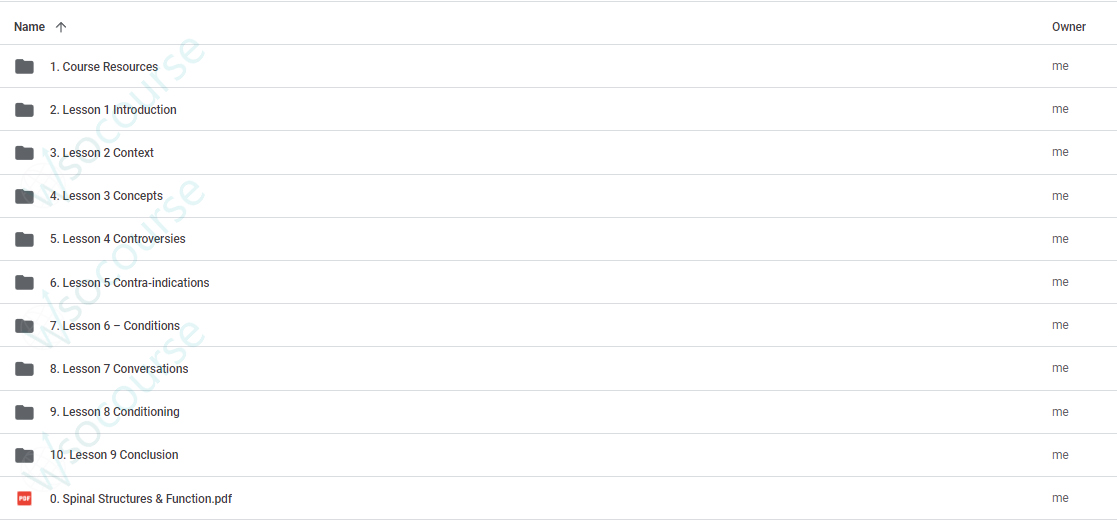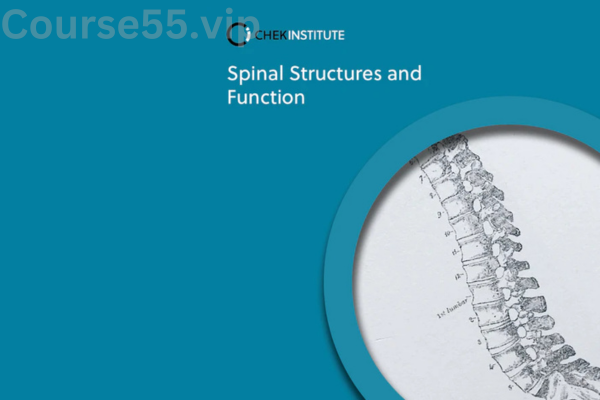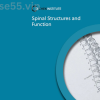-
×
 Outbursts, Oppositional Defiance and Frustration in the Classroom: Self-Regulation Techniques to Reduce the Frequency, Severity and Duration of Problematic Behavior By Laura Ehlert - PESI
1 × $23.10
Outbursts, Oppositional Defiance and Frustration in the Classroom: Self-Regulation Techniques to Reduce the Frequency, Severity and Duration of Problematic Behavior By Laura Ehlert - PESI
1 × $23.10 -
×
 Attachment Focused Therapy: Trauma Related Disorders in Children & Adolescents By Daniel Hughes - PESI
1 × $23.10
Attachment Focused Therapy: Trauma Related Disorders in Children & Adolescents By Daniel Hughes - PESI
1 × $23.10 -
×
 Barb Stepp’s NLP Master Practitioner By Barbara Stepp
1 × $23.10
Barb Stepp’s NLP Master Practitioner By Barbara Stepp
1 × $23.10
Spinal Structures & Function By CHEK Institute
$139.00 Original price was: $139.00.$23.10Current price is: $23.10.
SKU: C55vip.42975lAxb4RDm
Category: Download
Tags: CHEK Institute, Function, Spinal Structures, Spinal Structures & Function
Spinal structures & function: A comprehensive review of the course by Chek Institute – Digital Download!

Spinal Structures & Function By CHEK Institute
Overview

A Thorough Exploration of the Spinal Structures & Functions Course by Chek Institute
The human body, often likened to an intricate machine, relies on a vast array of components working together in harmony. Among these, the spine stands as a cornerstone, not only ensuring structural integrity but also playing a crucial role in overall health and physical performance. The “Spinal Structures & Function” course from the Chek Institute aims to demystify the spine’s complexities, shedding light on its evolutionary journey, its functional role, and its critical importance in rehabilitation and athletic performance. This course invites participants to explore the evolutionary history of the spine, its embryological development, and the factors that may threaten its health, such as injuries and repetitive stress. The program presents a holistic perspective, combining advanced neurophysiological insights with practical knowledge to enhance spinal health and performance.
Exploring the Evolution and Functionality of the Spine
The spine, much like a meticulously designed bridge, serves as the body’s structural support while enabling a range of movements. From a biological standpoint, the spine’s evolution has been influenced by the need for efficient locomotion and environmental interaction. Understanding the spine as both a protector of the nervous system and a facilitator of movement helps to capture its multifaceted significance in human life.
The Embryological Development of the Spine
During the early stages of human development, the spine undergoes remarkable transformations. Initially, it begins as somites—block-like structures made of mesodermal cells—and evolves through intricate cellular migrations and differentiation. This process is akin to a sculptor carefully shaping a block of marble into a work of art. This section of the course delves into the embryological development, examining how genetic and environmental factors influence spinal health throughout life.
Key Factors Influencing Spinal Health
Spinal health is shaped by a variety of factors that can either strengthen or weaken its structure. Both acute injuries from trauma and chronic stress from repetitive motion can disrupt spinal health. Lifestyle choices—such as physical activity, nutrition, and posture—play a significant role in determining the long-term health of the spine.
-
Injuries: Traumatic accidents or long-term overuse can cause discomfort and functional limitations.
-
Repetitive Stress: Continuous pressure on the spine may result in issues like herniated discs or degenerative conditions.
-
Lifestyle Habits: A sedentary lifestyle, poor eating habits, and ineffective stress management can negatively impact spinal health.
Engaging with these factors helps participants identify strategies for rehabilitation and performance enhancement. The course equips them with practical, real-world tools to improve spinal health on a daily basis.
Adopting a Holistic Approach to Spinal Health
One of the course’s distinguishing features is its emphasis on a holistic approach to spinal health, which sets it apart from traditional educational methods. By merging advanced neurophysiology with rehabilitation techniques, participants gain a well-rounded understanding of how to care for the spine effectively.
The Role of Exercise Rehabilitation in Spinal Health
A comprehensive understanding of spinal health is incomplete without addressing the importance of exercise rehabilitation. The course emphasizes the use of progressive exercise models tailored to individual needs. Much like how a musician perfects a symphony through gradual practice, individuals can improve spinal health through structured and methodical exercise.
Benefits of Exercise Rehabilitation:
-
Supports muscular stability around the spine.
-
Enhances flexibility and mobility.
-
Aids recovery from spinal injuries by improving circulation.
The course’s integration of manual therapy with exercise rehabilitation ensures that participants are well-equipped to incorporate best practices from both domains. This comprehensive approach mirrors the artistry of a dancer mastering both technique and expression to deliver a flawless performance.
Common Spinal Conditions and Their Management
Throughout the course, participants are introduced to a range of spinal conditions. They not only learn to identify these conditions but also gain insights into their implications for health and performance. Conditions like scoliosis, lordosis, and herniated discs are thoroughly explored, providing valuable knowledge for rehabilitation professionals.
-
Scoliosis: An abnormal curvature of the spine, often developing during childhood or adolescence.
-
Herniated Discs: Occurs when the gel-like center of a disc protrudes, causing nerve irritation and discomfort.
-
Degenerative Disc Disease: A condition linked to aging and wear, resulting in pain and limited movement.
Effective management of these conditions requires a deep understanding of their complexities, enabling rehabilitation professionals to provide personalized, effective treatments.
The Impact of Lifestyle Choices on Spinal Health
Lifestyle factors significantly affect spinal well-being, influencing not only individual health outcomes but also athletic performance. The course underscores the profound connection between day-to-day habits and spinal health.
The Importance of Ergonomics and Posture
In a world increasingly dominated by sedentary behavior and screen time, the phrase “sitting is the new smoking” has gained attention for its warning about poor posture. The course places a strong emphasis on ergonomics, highlighting how proper posture and workspace adjustments can improve spinal health and overall well-being.
Strategies to Improve Ergonomics:
-
Workstation Adjustments: Altering chair height and screen position to promote better posture.
-
Active Breaks: Scheduling short breaks every hour to perform stretches or movements that relieve strain.
Implementing these strategies fosters an environment that supports spinal health and enhances quality of life.
The Role of Nutrition and Stress Management in Spinal Health
Maintaining spinal health involves more than just physical activity; proper nutrition and effective stress management are key components. The course emphasizes the importance of a balanced diet rich in anti-inflammatory nutrients, such as omega-3 fatty acids, which play a vital role in supporting spinal health.
Additionally, stress, often a hidden threat, can manifest as physical tension, contributing to muscle pain and discomfort. The course highlights the significance of stress management techniques, such as mindfulness and relaxation exercises, offering a holistic approach to spinal health that encompasses both the body and mind.
Course Structure and Participant Feedback
Spanning about four hours and forty minutes, the “Spinal Structures & Function” course is divided into 12 instructional videos. This format blends theoretical knowledge with practical insights, allowing participants to learn at their own pace and integrate the material effectively.
Feedback and Insights from Participants
The course has garnered impressive feedback, with a perfect 5.0 out of 5 rating from participants. This high rating reflects the course’s depth and relevance, with many participants praising its value, especially for those working in rehabilitation and performance optimization.
One participant noted, “My knowledge expanded significantly through this course. The integration of manual therapy with exercise rehabilitation provided me with new insights that I can apply immediately in my practice.” Such testimonials highlight the course’s transformative impact.
Certification and Career Opportunities
Upon completion of the course, participants receive a certificate that recognizes their newly acquired expertise. This certification not only validates their learning but also offers an opportunity for career advancement in fields like rehabilitation, athletic training, and holistic health practices.
Final Thoughts on the Spinal Structures & Function Course
In conclusion, the “Spinal Structures & Function” course by the Chek Institute offers a comprehensive exploration of spinal health from a holistic perspective. By integrating theoretical knowledge with practical applications, the course provides participants with invaluable insights into spinal evolution, function, and management. The high ratings and positive feedback from participants underscore the course’s effectiveness, making it a powerful resource for anyone looking to enhance spinal health and improve performance. By following the principles outlined in this course, individuals can improve both their personal health and professional practices, ultimately fostering better overall well-being.
Frequently Asked Questions:
Business Model Innovation: We operate a group buying strategy, allowing participants to share costs and access popular courses at reduced prices. This model benefits individuals with limited financial resources, despite concerns from content creators about distribution methods.
Legal Considerations: The legality of our operations involves complex issues. Although we don’t have explicit permission from course creators to resell their content, there are no specific resale restrictions stated at the time of purchase. This ambiguity creates an opportunity for us to provide affordable educational resources.
Quality Control: We ensure that all course materials purchased are identical to those offered directly by the creators. However, it’s important to understand that we are not official providers. As such, our offerings do not include:
– Live coaching calls or sessions with the course author.
– Access to exclusive author-controlled groups or portals.
– Membership in private forums.
– Direct email support from the author or their team.
We aim to reduce the cost barrier in education by offering these courses independently, without the premium services available through official channels. We appreciate your understanding of our unique approach.
Be the first to review “Spinal Structures & Function By CHEK Institute” Cancel reply
You must be logged in to post a review.















Reviews
There are no reviews yet.